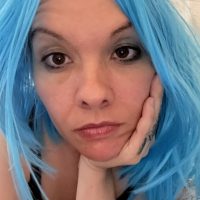
I keep hearing it…
“Quarantine was so hard, the pandemic was so hard for us, not seeing people for almost two years was so hard, I don’t know if I could do that again, it was soooooooo hard, I think I have PTSD from how hard that was.”
Let me just start by saying:
If you in fact had a home to shelter in place in and nobody inside of it was abusing you, if you had any food to eat at all even if it wasn’t your favorite, if you didn’t contract COVID-19 and nobody near and dear to you suffered and died a painful, tragic death due to COVID 19, if you didn’t lose your job or have electric bills and eviction notices piling up and restless little ones climbing the walls, and if you don’t have urgent medical needs that were put on the way back burner due to the demands put on every health care provider, and if you in fact had confidence in your sense of the world and your existence in it as being “normal” pre-pandemic and are in a hurry to get back to that happy, secure paradigm, then I can promise you, two years of mostly sitting in your house and social distancing from your squad may have been hard, but it wasn’t that hard in the scheme of things.
I’m not here to invalidate you, only remind you to check your able-bodied privilege because whining predominately about the social constraints of the pandemic doesn’t sound much different to my disabled self as listening to people protest the apparent oppression of having to put a piece of fabric on their mouth and nose.
In what world is frequenting amusement parks, trendy restaurants, concerts and plays, festivals, libraries, and organic grocery stores a right and not a privilege to begin with?
Oh.
That’s right.
The first one.
Setting aside for a moment the concentrated suffering of victims of intimate partner violence, the immunocompromised, the houseless, and the impoverished during the pandemic, and adding a little side bar to remind everyone that those pandemics still have no clear-cut end in sight and have been quietly integrated into the collective concept of “normal,” I will stick to the reality that for many disabled people, never or rarely being able to leave the house is “normal.”
I don’t remember much of my time in the Intensive Care Unit, but I remember the neurosurgeon informing me that I can’t drive. Ever. Never ever.
My world began shrinking in 2016, four years before the COVID-19 pandemic.
There was a Grand Mal seizure in Whole Foods, and another on Rainier Ave. South, another on Third and Pike, another in Beth’s Café, and another on Denny Way—each one minimizing my capacity to go, well, out.
I was traumatized and bruised and my tongue was all chewed up. And it was hard. It was really, really hard.
I lay in bed at the women’s transitional home I lived in at the time. I started retraining my brain to read again, a lifelong passion of mine. I suddenly found it a challenge to stay on the page and with the narrative from underneath the anti-epileptic medication and with a hole in my head to boot. But I did it. Because I didn’t have the ability to go to the library, and the rest of the world wasn’t sheltering in place with me, coming up with ingenious solutions like little free libraries. I read every book on the bookshelf in the women’s home, which reminded me of the week I’d spent in jail.
At least I had my phone.
They didn’t have internet during the Spanish flu! I watched horror documentaries and YouTube videos about other people living with epilepsy and texted, and texted, and texted.
When I did go out, it was a risk I had to take. The pandemic has actually made life easier and more accessible for many people living with disabilities. Now I can Zoom my neurologist and therapist and order almost anything. It also made my life easier as a single mom without a car.
But in 2016, I was taking busses across the city to get my CT scans and EEGS. Holding my breath and crossing my fingers that I didn’t black out and get hurt or robbed or dead. Going out became such a dreadful ordeal that it wasn’t fun anymore. I made sure my medical ID bracelet was on should someone stumble across my unresponsive body. I let someone know where I was going and let someone else know I was on my way and what to do in case they didn’t hear from me in x amount of time. I brought an extra sweater should I need to break my fall, I stared at visually neutral spots in the distance and put Bossa Nova jazz in my headphones if what I was seeing and hearing in the city I used to love overstimulated me.
I counted trees and tried to find 10 beautiful things and grasped at all of the tools to cope with being in the world when it became a scary place. On my own. There were no Zoom conferences about the depression I experienced when I lost the world. There were no news channels broadcasting a sketchy projected end date—only neurologists reminding me time and again that there is no cure for epilepsy.
I’ve gone to school, I go to shows, I’ve gone to Disneyland. Not alone. With friends who know what to do if I fall down convulsing. With extra medication and my doctor’s permission. It’s always a risk. Like it was and still is a risk to go on a socially distanced hike with a friend or to eat in a highly sanitized restaurant or see the world through a mask and plexiglass. It’s a risk for me to go to the bank or the birthday party or the gym.
There’s still no epilepsy vaccine. I got it, and it’s not looking like it’s going away in my lifetime.
My world expands with seizure control, then it shrinks again with seizures, then I find a middle road where I can go out but only during this window of time when my med levels are peak, and if I’m home by curfew so my seizure threshold doesn’t drop due to lack of sleep, or only with an adult baby sitter, and not to the grocery store because the lights and noise and crowds do me in.
But I’m not alone here.
There are elderly people, people confined to wheelchairs denied access from many places, agoraphobic people, people suffering from extreme obesity, people severely immunocompromised for whom every day carries with it the threat of peak pandemic. Debilitating depression and anxiety, people with sun allergies, catatonic people, people with severe brain damage, and people confined to hospital beds for reasons other than COVID-19.
People who will not go back to “normal” as you know it anytime soon. And some who never experienced it at all.
I really don’t want to hear anymore about how catching a glimpse of what it was like to have a debilitating condition without the pain and suffering was soooooooooo hard for you. Unless that experience informs your empathy for all of the people who have debilitating conditions that prevent them from riding public transportation or eating in a colorful, buzzing restaurant or taking shrooms at Coachella or getting up early for a morning jog alone or flying to Vegas for the weekend, beyond 2020.
We are always here.
But you don’t hear much about us.
~










Read 2 comments and reply